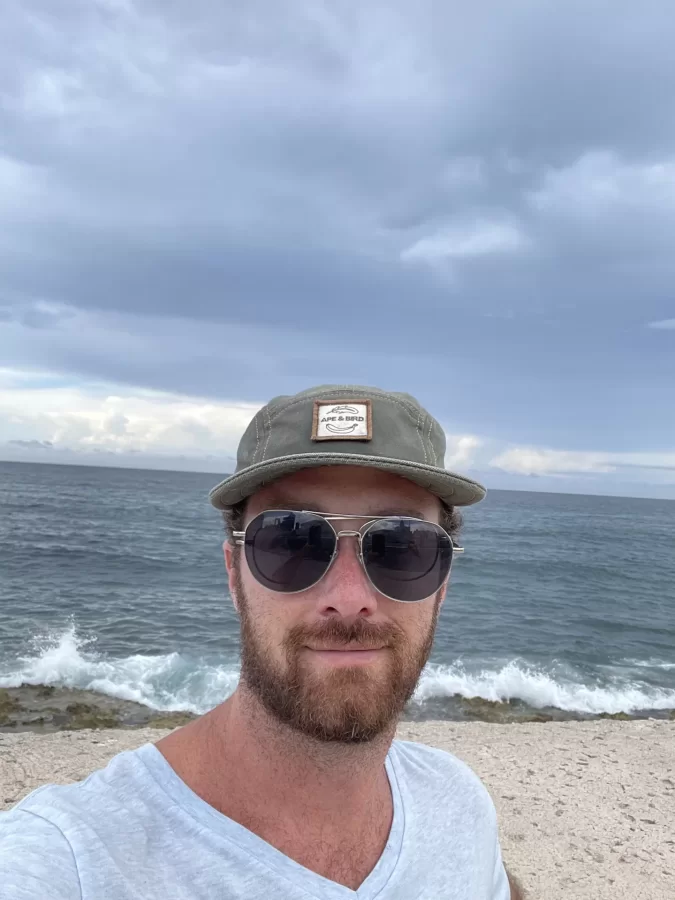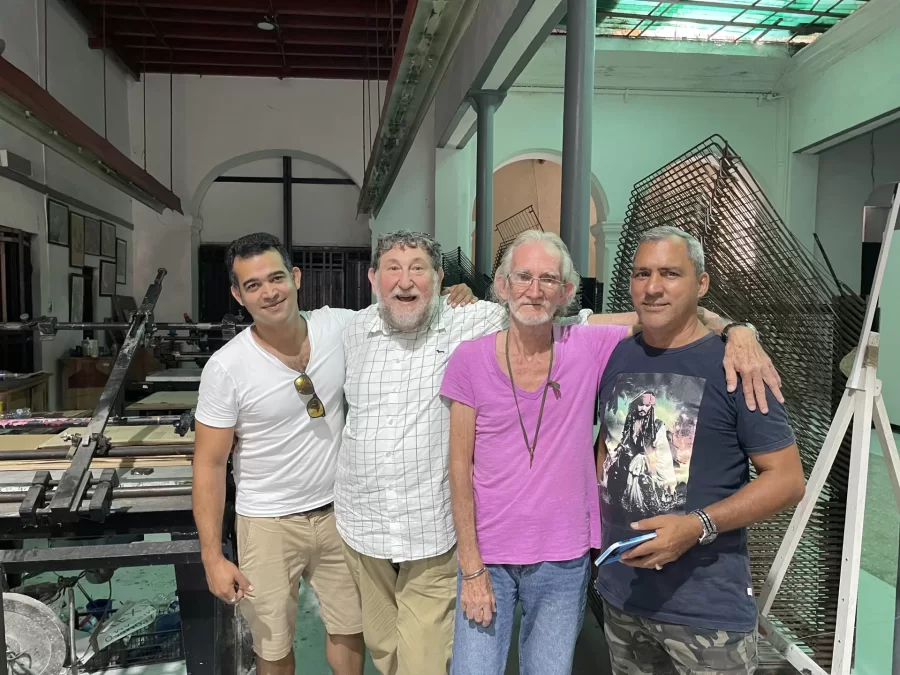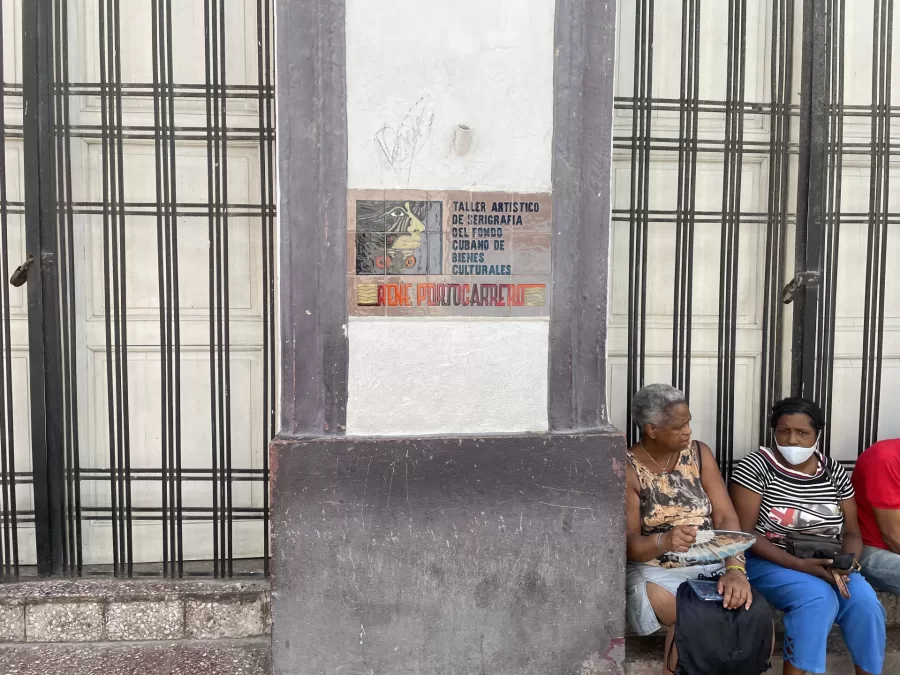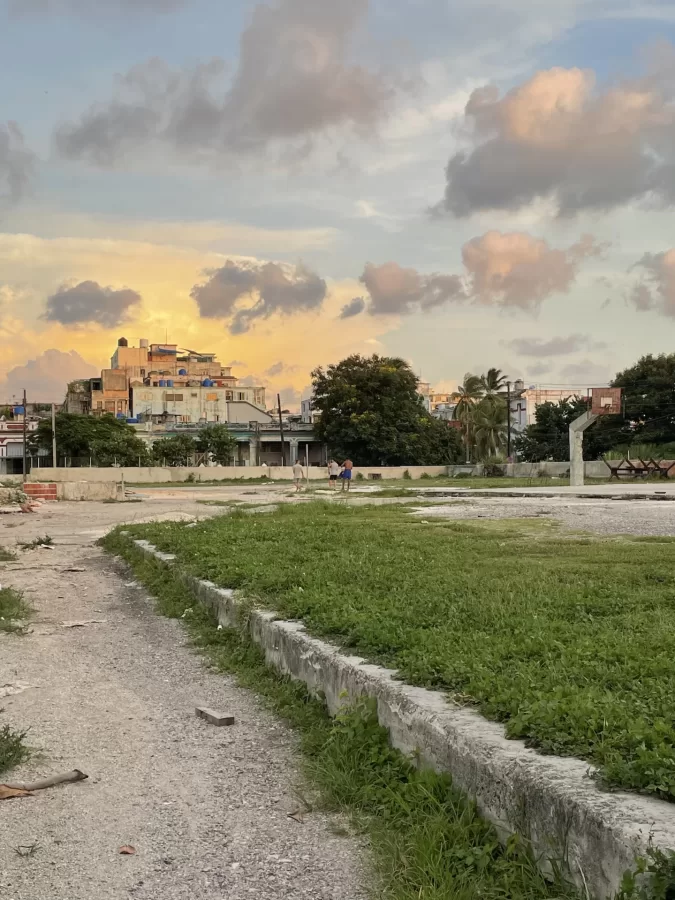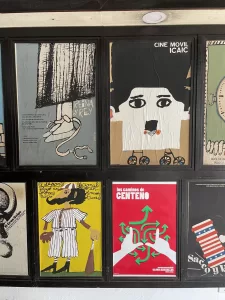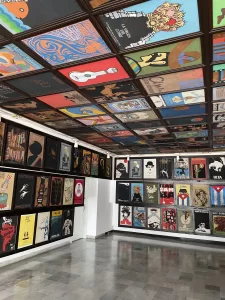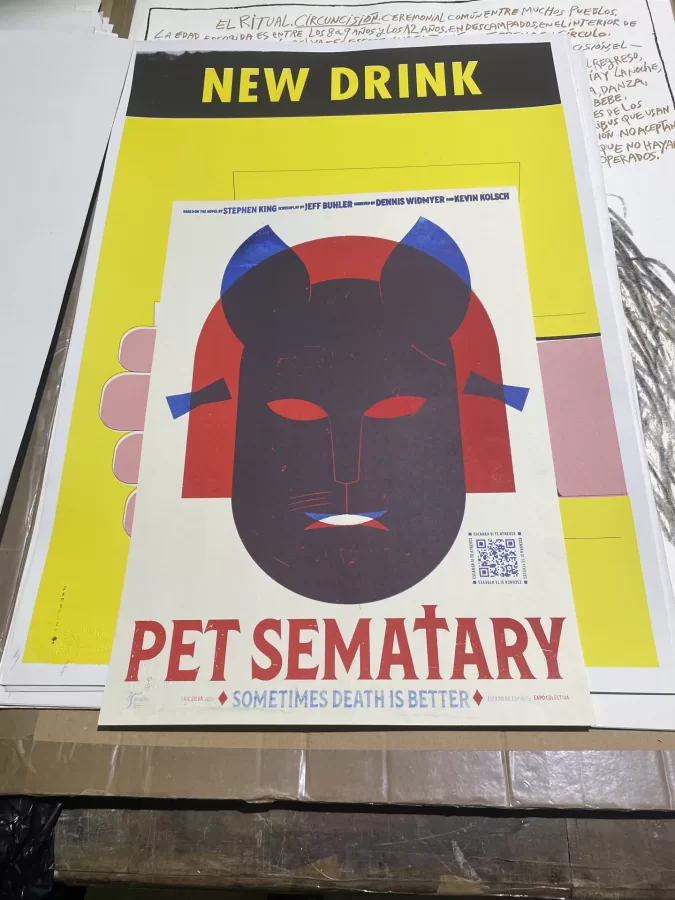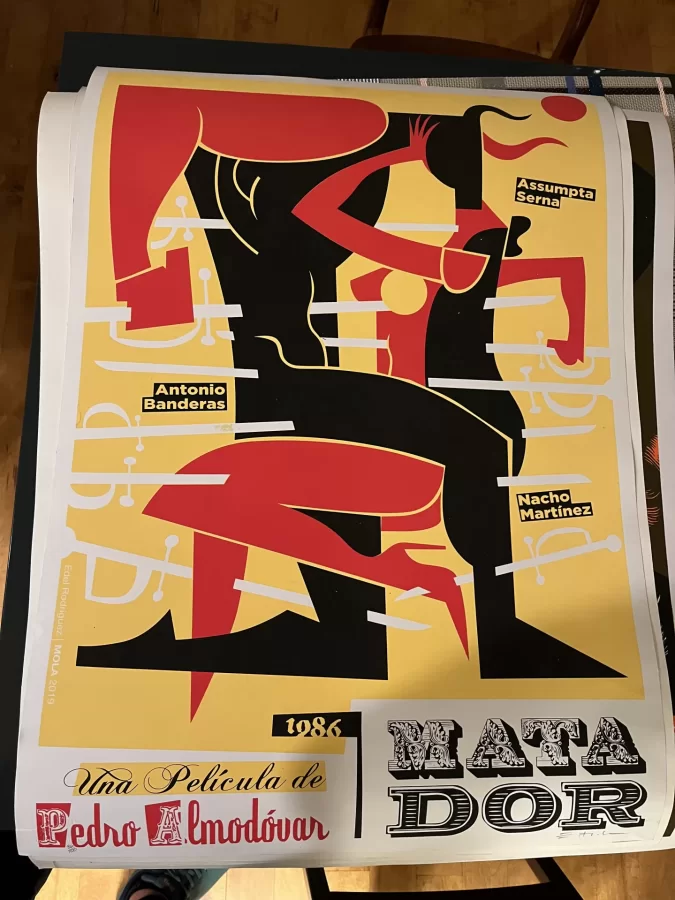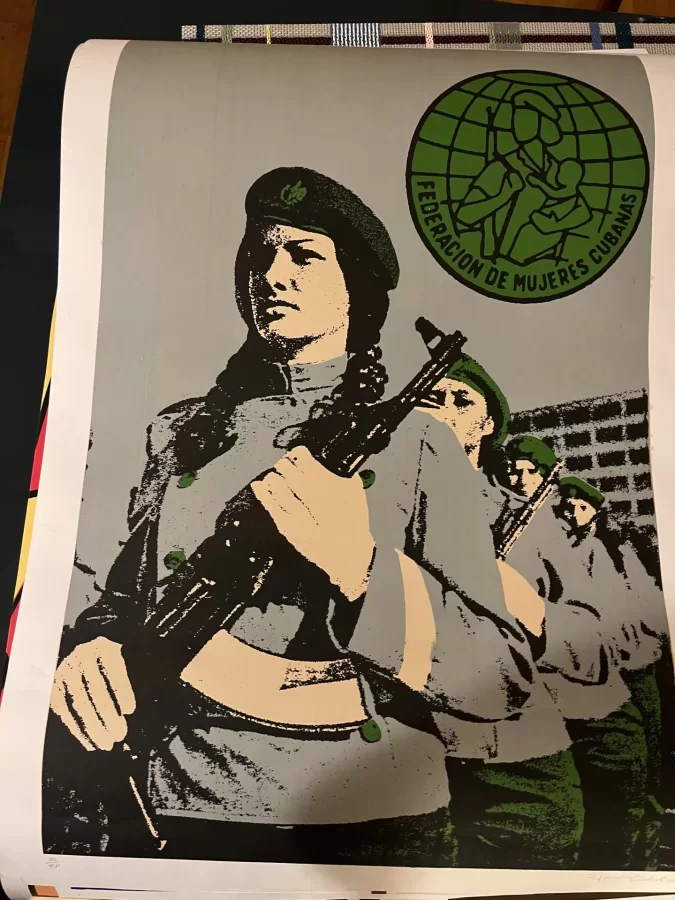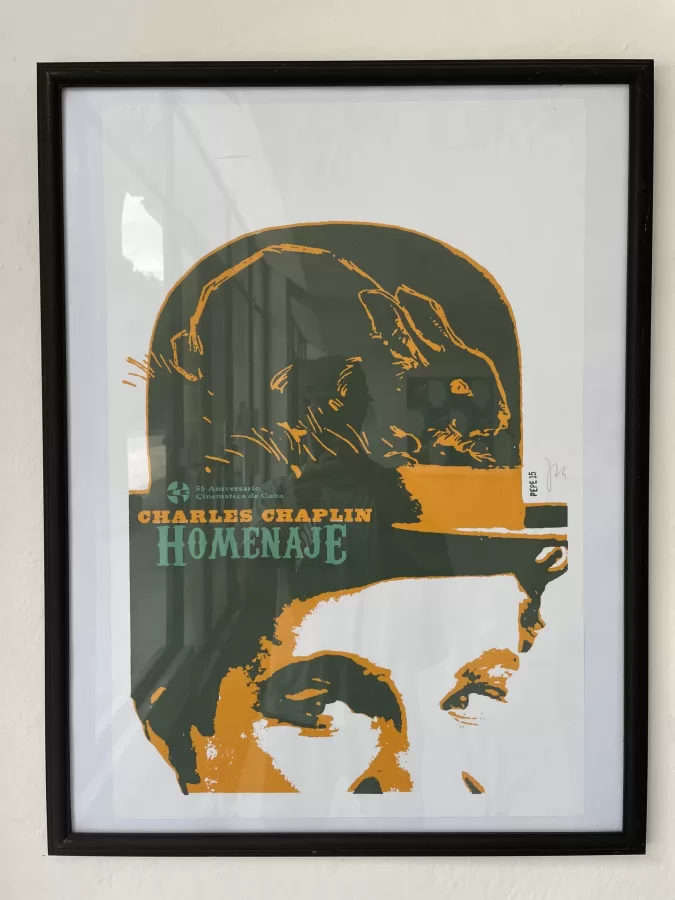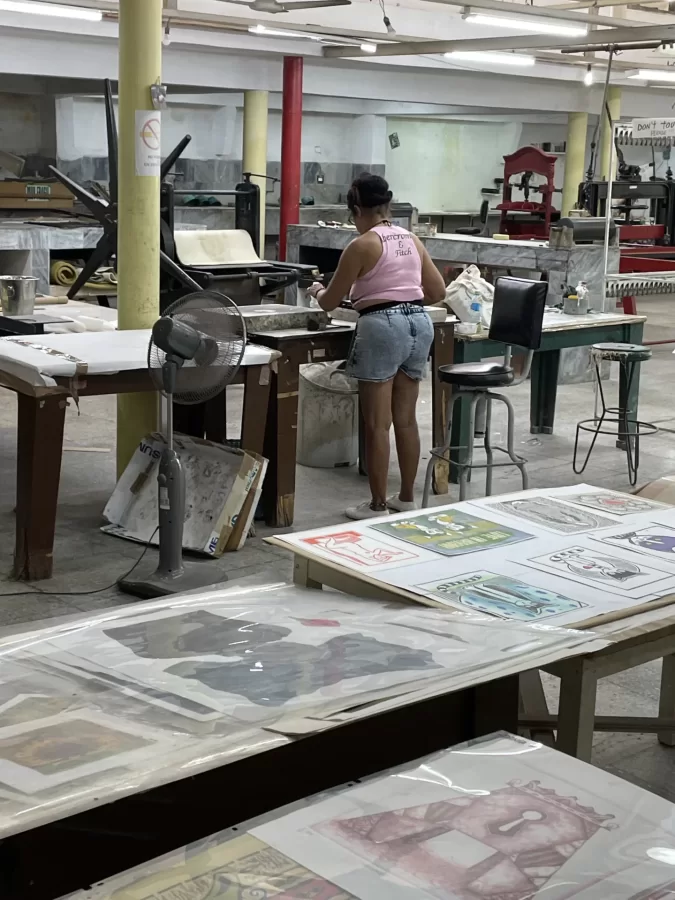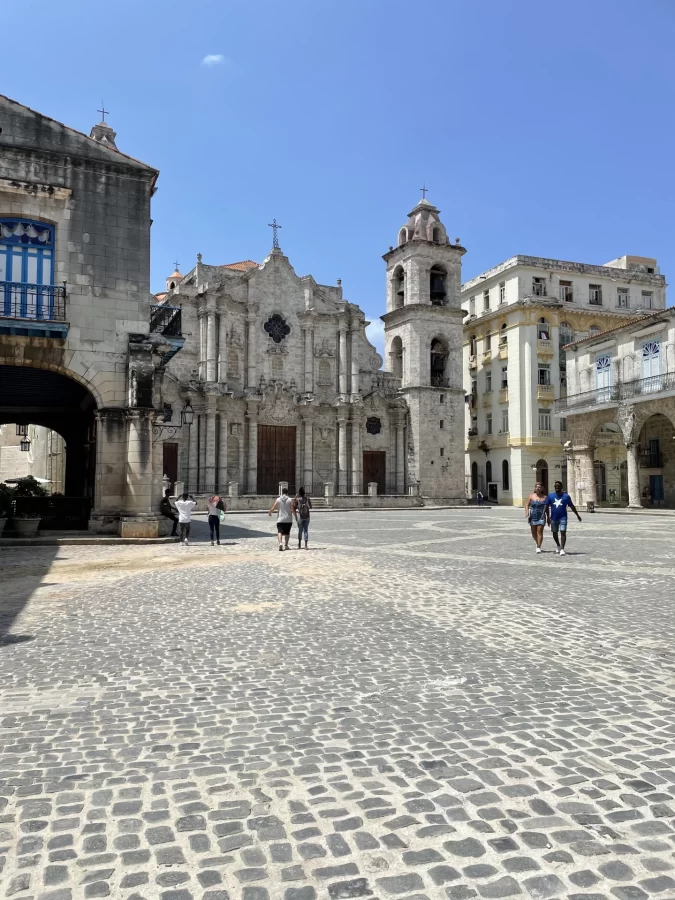2022 Barlow Travel Grant
Ryan Dean ’09
Personal Background
I have always been an artist, but printmaking has been closest to my heart since I first took the Etching Workshop class at Bates back in 2007. As an art form, most prints are reproducible and therefore allow for a wider audience than many other traditional media.
For this reason, it is often called the democratic multiple and lends itself to social causes and can be a great agent for change within the world. In the years since graduating from Bates, I have personally been working with print as a key member of the AS220 Community Printshop in Providence, RI, creating prints for both political causes and my own enjoyment. I have also encouraged my students to use print in these ways within my classroom, happily sharing my enthusiasm for the craft.
Outside of the classroom, I have also become an entrepreneur, promoting language learning through card games that combine my passion for languages and fun with my love for print and illustration. My business, LUMUKU, has become a driving force in my creative life and has helped many people learn Spanish and English while playing games.
As a recipient of the Barlow Alumni Educator grant, it was my intention to travel to Havana, improve my Spanish, and learn about the ways in which print has impacted Cuban society.
Trip Report
During my two and a half weeks in Cuba, I stayed in Centro Habana and took intensive language lessons at a nearby school. The course was structured as formal language instruction each morning and an afternoon excursion to learn about the country’s history and culture. Such excursions included visits to historical museums, local galleries, and print studios such as Taller Experimental de Grafica. I was fortunate to meet the prominent Cuban printmaker, Choco, and also visited the Instituto Cubano del Arte e Industria Cinematográficos, which houses original silk-screened posters promoting cinema in Cuba. Interestingly, although Fidel Castro was a fan of Hollywood cinema, he did not wish to promote Hollywood itself, and so the approach to imagery in the Cuban promotional materials was completely original. This created a distance between Cuba and Hollywood; the results are highly creative, and truly a breath of fresh air.
As is sometimes the case with travel, not everything went as planned. The Museo Nacional de Bellas Artes was inexplicably closed during my stay, but I was able to find smaller galleries all around the city. Taller Portocarrero, a silk screen studio that I visited twice, would not be printing again until September, and so I did not get to see the artists in action, but I did get to hang out with them on two occasions. I was also able to view and purchase their work, and I donated a great deal of silk screen inks that I had brought from my studio in Providence. So many of the prints here ranged from event posters and film promotions to more nationalistic projects and personal content of the artists. All of the art I saw in Havana displayed top-notch creativity and has made a lasting impression on me. In the classroom back here in the US, I have been able to share images from prints, paintings, and sculptures that I encountered while in Havana, and I am happy to say that this research has benefited my students’ thinking as well.
In addition to the professional development, it was great to take two and a half weeks of time to completely unplug. Over the course of this time, I did not have a cell phone and only accessed the internet briefly about four times. This allowed me to experience my time in Havana more fully and truly soak in the experiences of each day.
Cuban weather is extremely hot in August, and the availability of bottled water is often sparse and always unpredictable. For this reason, I found a deep appreciation for water. During my first days in Havana, I had to seek out new ways of staying hydrated, such as the mango juice that I bought from my neighbor downstairs every other day or fresh coconut water on a hot afternoon.
Almost every evening, there would be a big storm, which was a great opportunity to journal, draw, read a novel in Spanish, or spend time with my neighbors. During my first week, a giant petrol tanker near Havana was struck by lightning in one of these storms, and the resulting fire created a giant black plume of smoke that contaminated the air. The following day, the fire spread to another tanker and caused it to explode. The mixture of these contaminants in the air and rain was something my language teacher cautioned against; not only was it in the air we breathed but on the crops grown in the field. This disaster birthed from a collision of the manmade and the natural was just another awakening to what I often take for granted in the world around me.
While taking all of this in, I also became friends with the parents of a Cuban artist who lives in Providence and whom I have known for many years. A few times a week, I would walk several miles along the Malecón, a long seawall, to their apartment in Vedado. We spent entire evenings talking about life and sharing art and meals. Through their eyes, I gained a better understanding of the complexities of Cuba. While every interaction I had with local people felt like a genuine pleasure, it was the friendship of these two, Wilma and Molina, that truly made it difficult to leave. Today, I carry memories of these events and my time spent with these friends, hoping to reunite sometime in the near future.
Reflections and Next Steps
I will never forget my time in Havana, and feel that it impacted my life on several levels. As a teacher, I have more perspective to share with my students. I am happy to have gained more knowledge of Cuban art and artists to share in my lessons. The personal growth during this time is what I mostly reflect on, though. Fortunately, personal and professional growth are intertwined for anyone working in human development, if they are separable at all. Without a doubt, my own learning outside the classroom has allowed me to become a more informed teacher who can better serve my students.
As stated earlier, my creative energies are often centered around my business, LUMUKU, for which I create fun illustrations that often make their way into language-learning card games. While my time in Cuba resulted in several priceless illustrations, my environmental concerns
were also brought to the forefront of my mind. At Bates, I took a geology course during my senior year that was called Global Change, for which I attended a lecture by Bill McKibben. This event changed the course of my life. I spent the next year coordinating rooftop installations on five different continents to raise awareness about rising atmospheric carbon levels; one was actually on top of the Bates Physical Plant and was part of my work as the Community Climate Liaison at Bates during the year after my graduation. In a sense, things have seemed to come full circle for me in that this Barlow grant became the impetus for a new body of printed work that I will create this year to engage the public and address environmental issues.
In the years since leaving Bates, I have used print as a way to communicate messages of social justice and change the visual landscape of the city where I currently reside. Now, with this renewed energy, I plan to create a series of twelve letterpress and silkscreen prints that can be distributed around my local community and will be displayed in a gallery here in Providence. It is my intention to gift a suite of these prints to David Barlow and to the Bates College Museum of Art by the end of the year. May they serve as a token of both my appreciation for this opportunity and the delicate balance necessary to sustain life on this planet.
